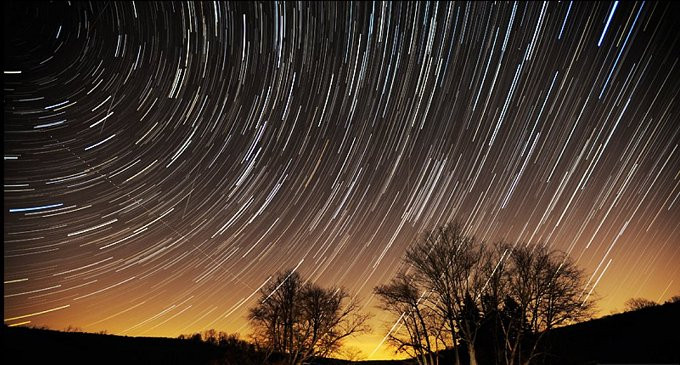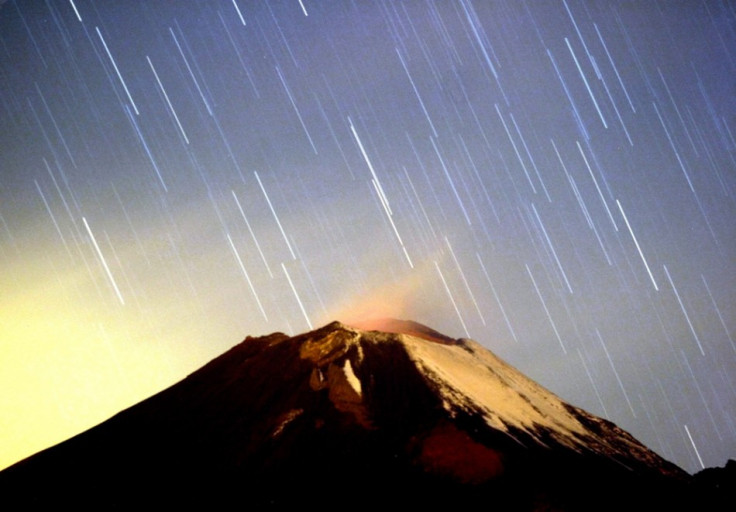Geminids 2014: Everything you need to know about 'most intense' meteor shower of the year

The Geminid meteor shower 2014 will peak on 13 and 14 December, with up to 100 shooting stars expected per hour.
The Geminids is one of the "most intense" meteor showers of the year, with first sightings of the phenomenon as early as 4 December.
It can also be seen from almost any point of Earth, but stargazers in the Northern Hemisphere will see higher rates as the radiant is higher in the sky.
When did they first start?
The Geminid meteor shower is relatively young, with first reports of the shower emerging in the mid-1800s. However, at this time only 10 to 20 meteors were reported per hour. Over 150 years later, we regularly see over 120 meteors per hour.
The shower was first noted in the 1860s when three stargazers independently noticed the shower between 10 and 13 December. Over the next decade observations became increasingly numerous, with more people realising a new annual shower was active.
In the early 1900s, the rates were about 20 per hour, increasing to 50 per hour in the 1930s, 60 in the 1940s and 80 in the 1970s.
The irregularity of the Geminids has been the source of much debate among the astronomical community, with their origin being something of a mystery, appearing to come from an asteroid rather than a comet, like other showers. The asteroid's debris trail orbits the sun, so it intersects with our planet's path once every year.
Where do they come from? The 3200 Phaethon mystery

The Geminids are not like most meteor showers. Normally, they come from comets that spew out meteoroids, but the parent of the Geminids is not a comet but a strange rocky object – possibly an asteroid - called 3200 Phaethon.
Unusually, however, this object sheds very little dusty debris and not nearly enough to produce the Geminids. Nasa astronomer Bill Cooke said: "They defy explanation. Of all the debris streams Earth passes through every year, the Geminids is by far the most massive. When we add up the amount of dust in the Geminid stream, it outweighs other streams by factors of five to 500."
3200 Phaethon was discovered by Nasa in 1983 which initially classified it as an asteroid. Researchers believe it could have broken off from a larger asteroid called Pallas, which could mean the meteors in the Geminids are debris from the break up. "But that doesn't agree with other things we know," Cooke said.
Another explanation is that the Geminids meteoroids were ejected when Phaethon was close to the sun, with a blast of solar heat boiling the jets of dust. This theory is also problematic, however, as the sun would not have added enough to the mass of the debris stream to keep it replenished over time: "We just don't know," says Cooke. "Every new thing we learn about the Geminids seems to deepen the mystery."
Why are they called the Geminids?
If you trace the paths of the Geminid meteors back, they seem to come from the constellation of Gemini. However, the radiant point just coincides with the bright star Castor. You do not need to find the constellation Gemini to watch the meteor shower because they streak across the sky in different directions and from numerous constellations. It is also possible to see meteors while looking away from the shower's radiant point.
Geminids will not crash down to Earth – but you might see 'earthgrazers'

Speaking to Space.com, Cooke said the Geminids does not produce meteorites (meteors that hit the ground). "That's an illusion. It's very rare, exceedingly rare, for a meteorite to land near an individual, and the Geminids won't produce meteorites. They will not make it to the ground. People don't have to worry about getting hit by falling Geminids."
The meteors should create long arcs that last for a second or two. Another feature of the Geminids is that they can be different colours – as well as glowing white, meteors can appear yellow, blue, red and green.
Raminder Singh Samra, a resident astronomer at the H R MacMillan Space Centre in Vancouver, told National Geographic: "Folks should keep an eye out for 'Earthgrazers,' these meteors [that] are long and bright that streak from the horizon to overhead. They exhibit a long tail as they follow a path parallel to the atmosphere."
Dates of the Geminids 2014
The 2014 Geminids will begin on 4 December and last until 17 December. They will peak overnight on 13 and 14 December, with the best time to go and look for shooting stars being between 9pm and 10pm local time – the moon will rise around midnight, so the first part of the night is better for viewing as there will be less interference from the moonlight.
Will the Geminids ever disappear?
Yes maybe. Experts believe the shower has enough dust to sustain the Geminids for quite some time. However, Cooke said that if Jupiter's gravity pushes the dust path out of Earth's way, the shower will no longer be visible from Earth. But this probably will not happen anytime soon.
© Copyright IBTimes 2025. All rights reserved.






















